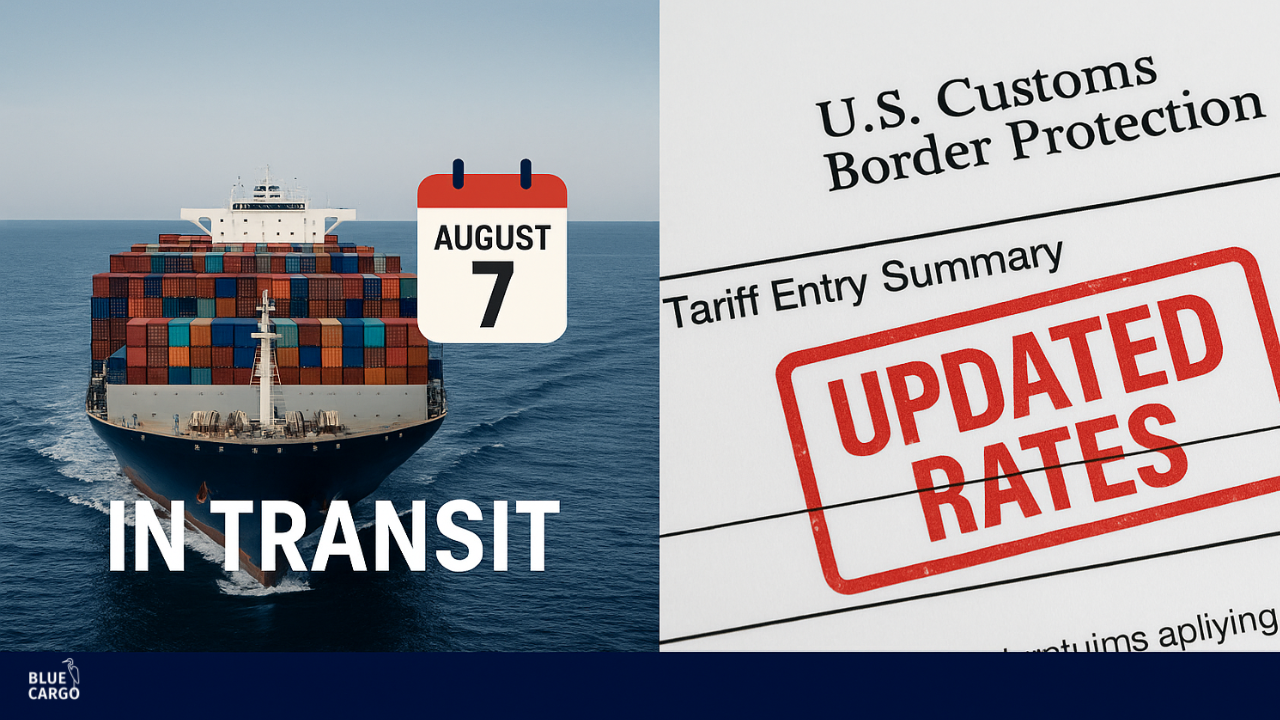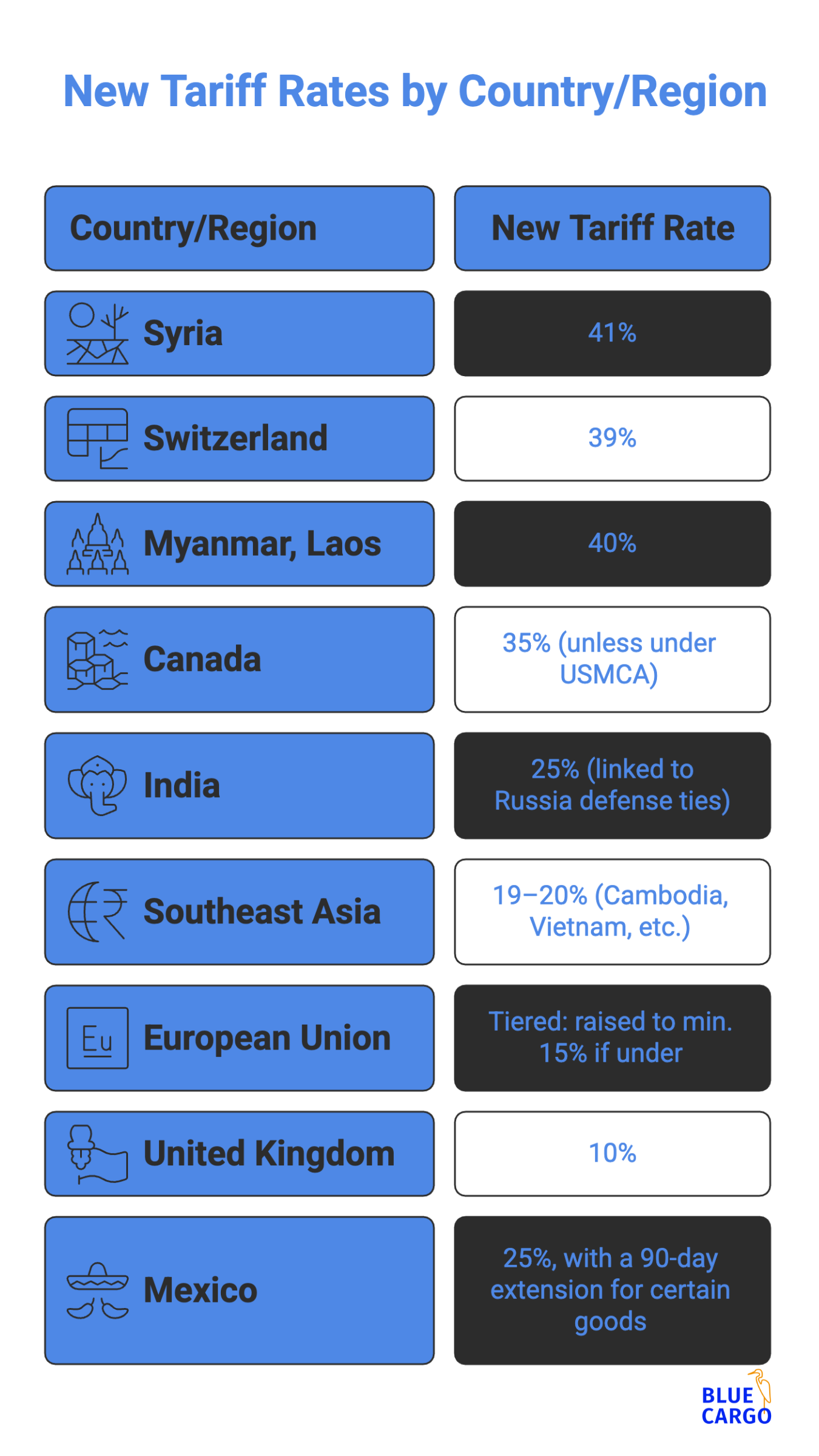
August 7 Tariff Changes: What’s In, What’s Out, and What Importers Can Do Now
The White House issued a new Executive Order reshaping U.S. tariff policy. The changes take effect August 7, with significant implications for importers, compliance teams, and procurement leaders.
The directive increases tariff rates across a wide range of countries, removes the longstanding de minimis exemption, and introduces new enforcement provisions targeting transshipment. Importers have a narrow window to act, especially if cargo is already in motion.
Key Policy Shifts Taking Effect August 7
- Tariff increases: New rates range from 10% to 41%, depending on origin.
- De minimis exemption suspended: The $800 threshold for low-value shipments no longer applies.
- Transit window: Goods loaded and in transit before August 7 qualify for the previous rate if they arrive by October 5.
- Transshipment enforcement: Goods routed through third countries may face a 40% rate if found to be misclassified or misrouted. Clarifying guidance is pending.
🌍 Who’s Affected the Most?

Immediate Actions for Supply Chain Leaders
- Audit upcoming shipments
- Confirm HTS codes and country of origin for all cargo entering after August 7.
- Validate cargo status
- If goods are already en route, document load and ETA to determine eligibility for pre-August seven rates.
- Recalculate landed costs
- Many tariff rates are rising sharply—margins, pricing, and supplier terms may need revision.
- Strengthen documentation
- In anticipation of transshipment enforcement, ensure precise, verifiable routing data is on file.
- Monitor legal and regulatory updates
- Several state governments and industry groups have filed legal challenges to the Order, but current rates remain enforceable.
Strategic Considerations
This round of tariff changes is more than a rate adjustment, it signals a broader shift toward tightened trade enforcement, reduced dependency on adversarial suppliers, and greater scrutiny on country-of-origin declarations.
While short-term friction is expected, especially given recent voluntary staff departures at customs and related federal agencies. These changes also open the door to long-term supply chain realignment and domestic capacity investment.
Need to recalculate landed costs or assess sourcing exposure under the new tariff structure?
BlueCargo helps importers model financial impact, validate in-transit status, and strengthen documentation to avoid costly errors.
📅 Book a 15-minute consultation with our trade intelligence team →
----


